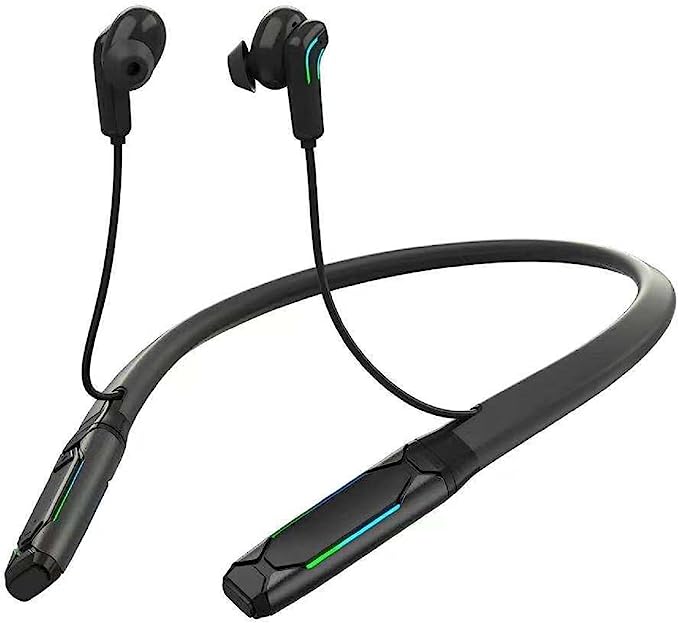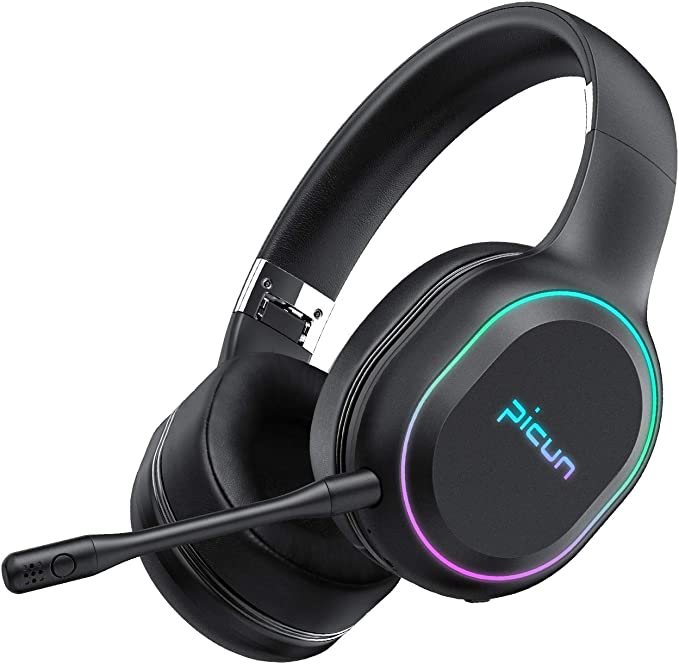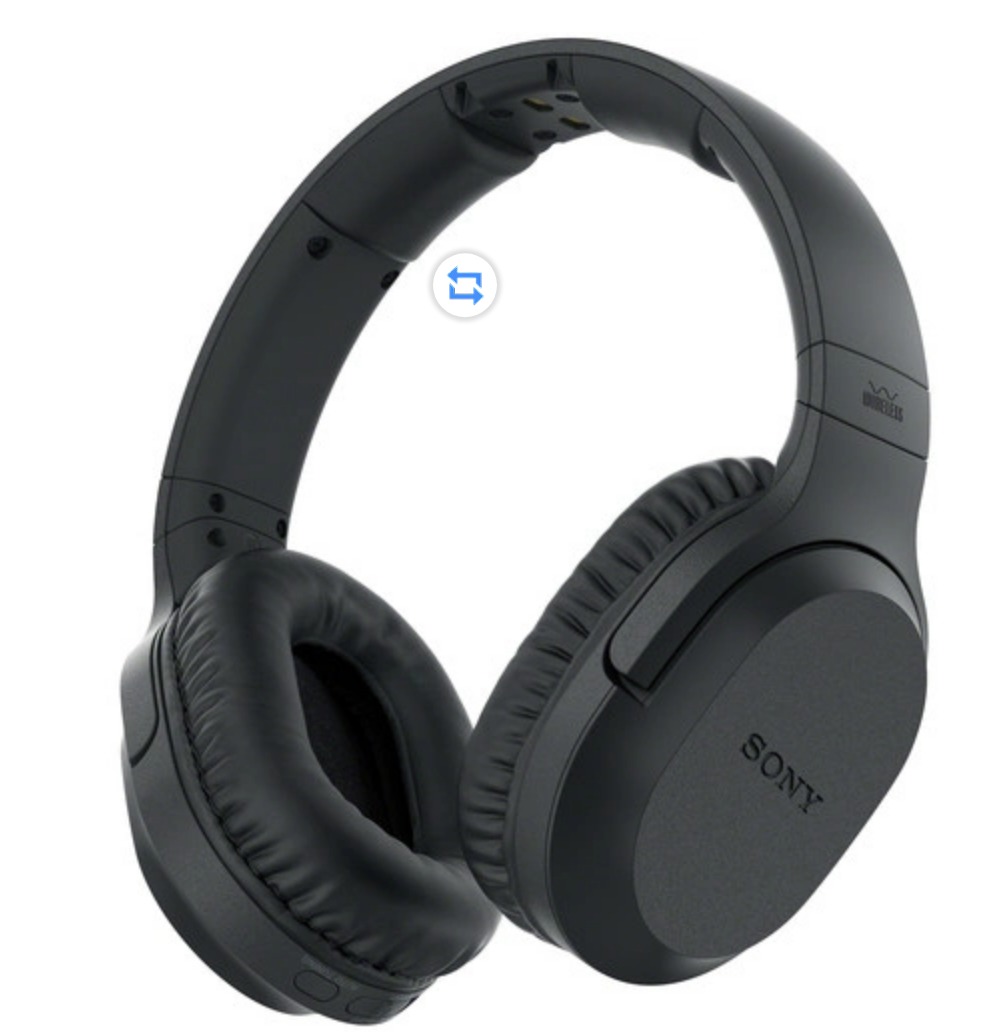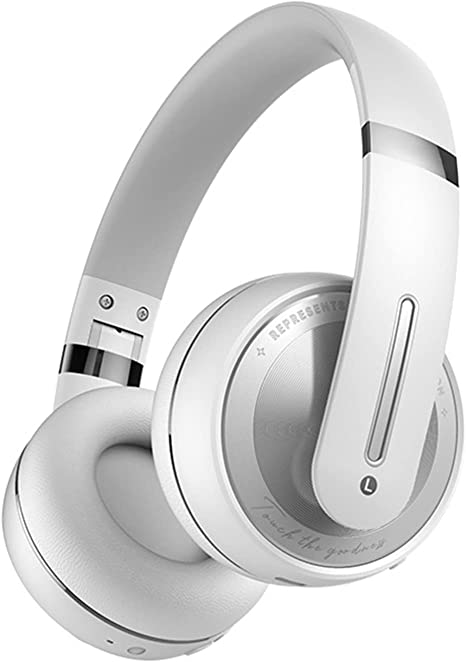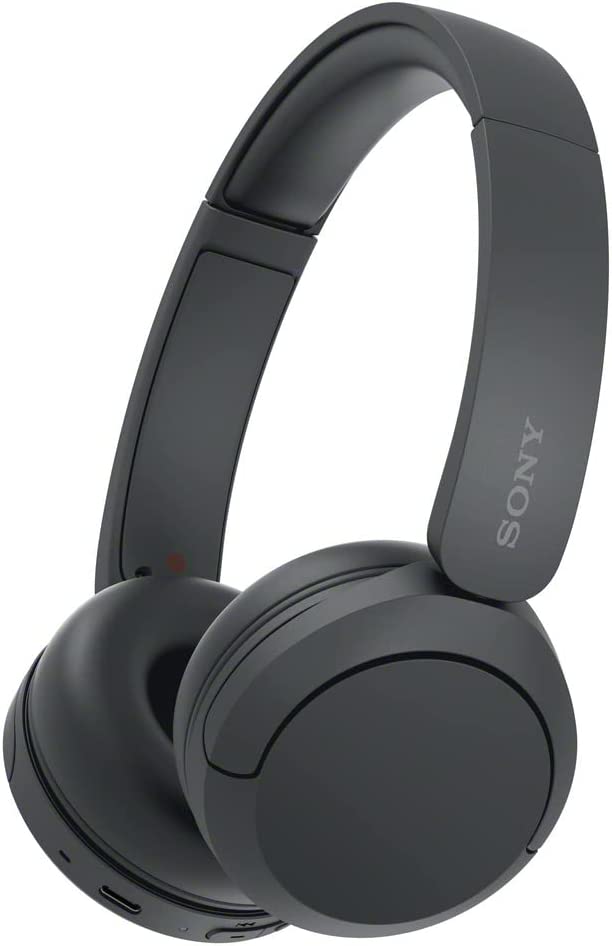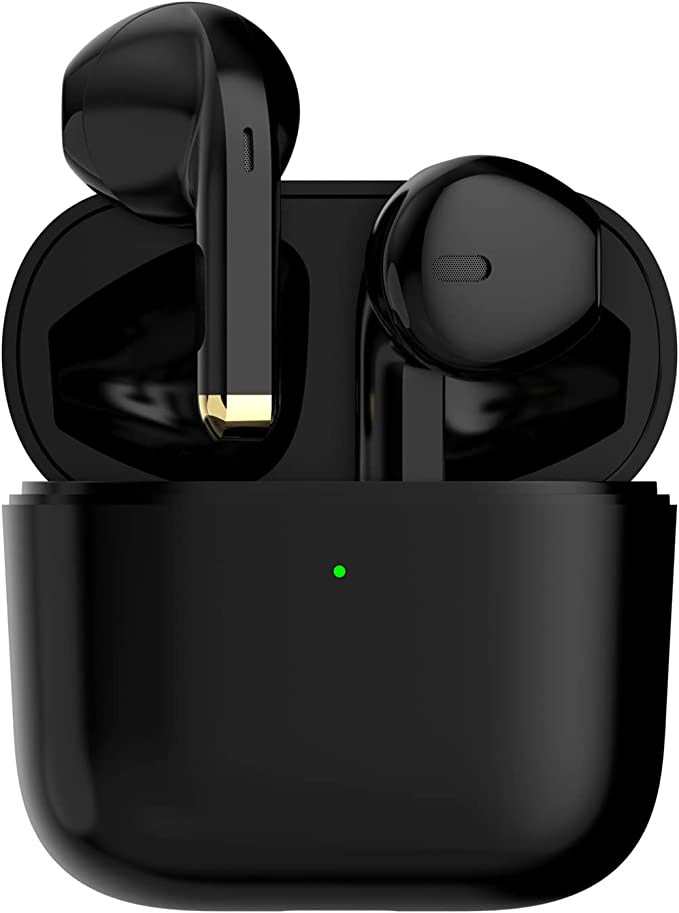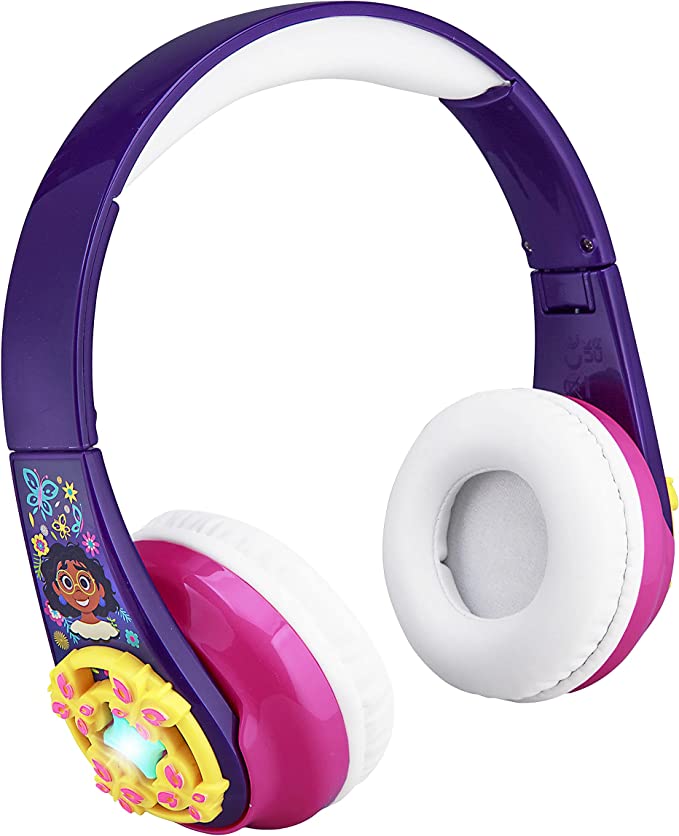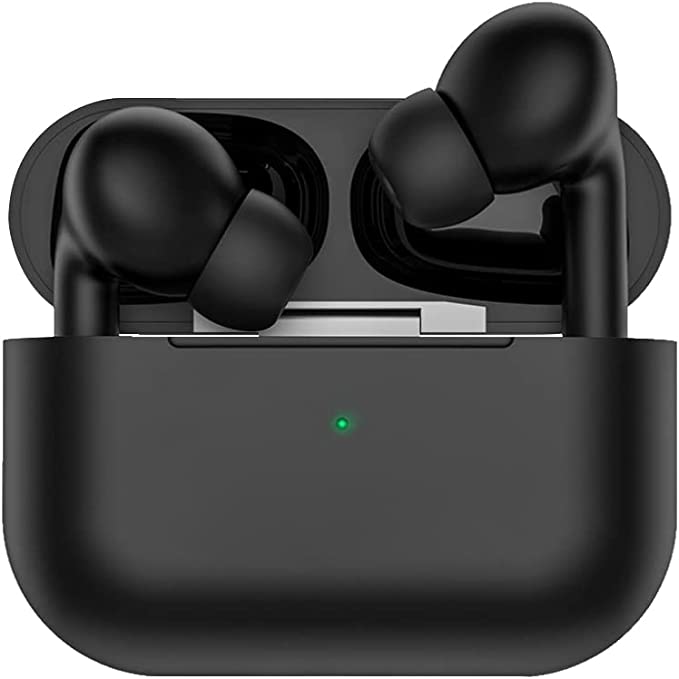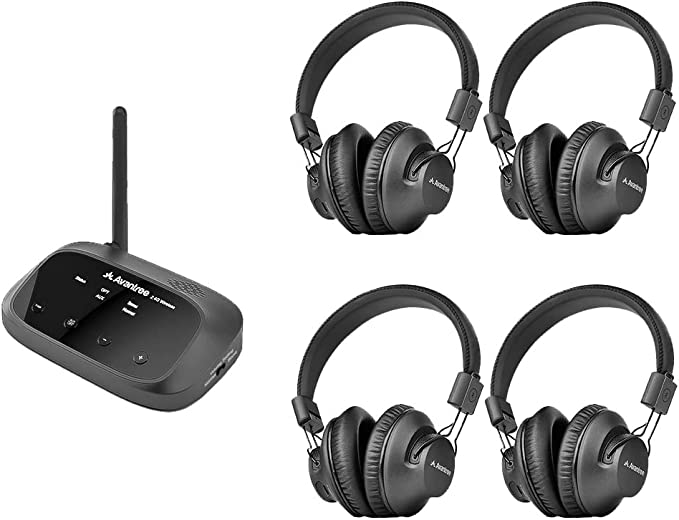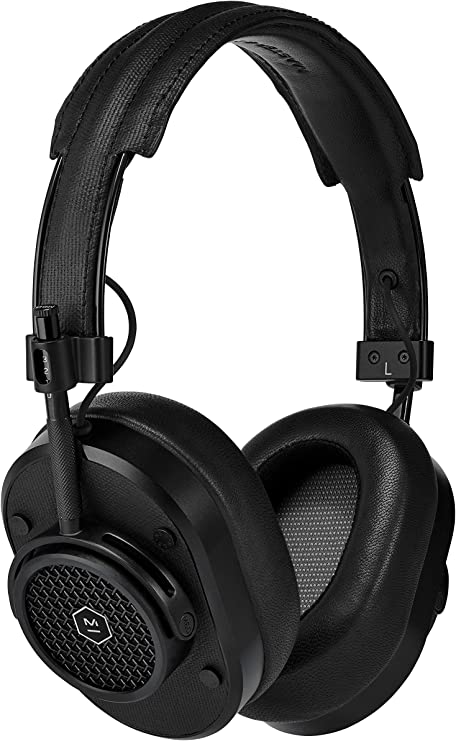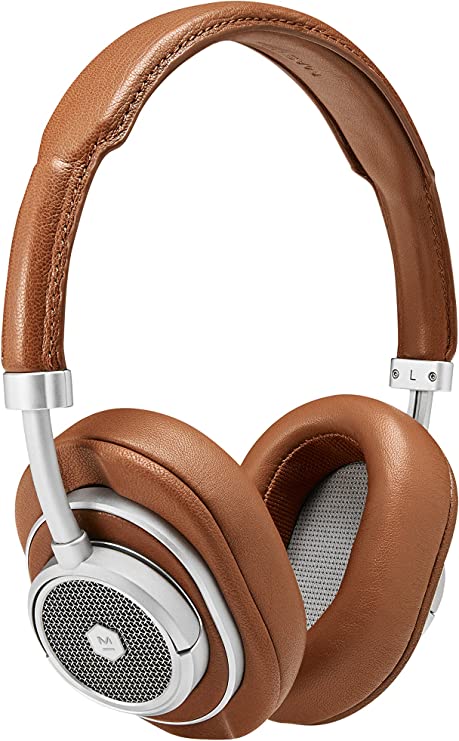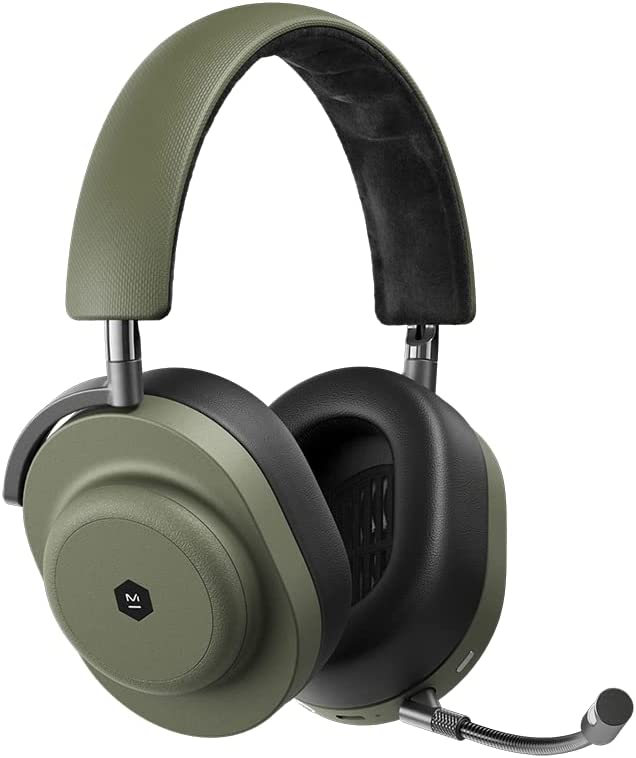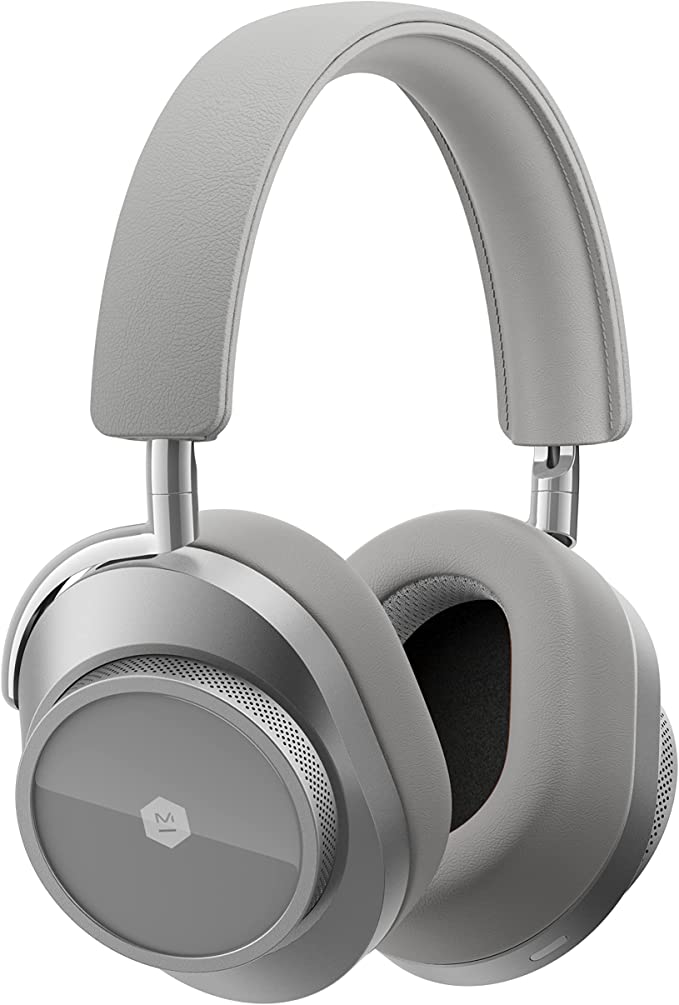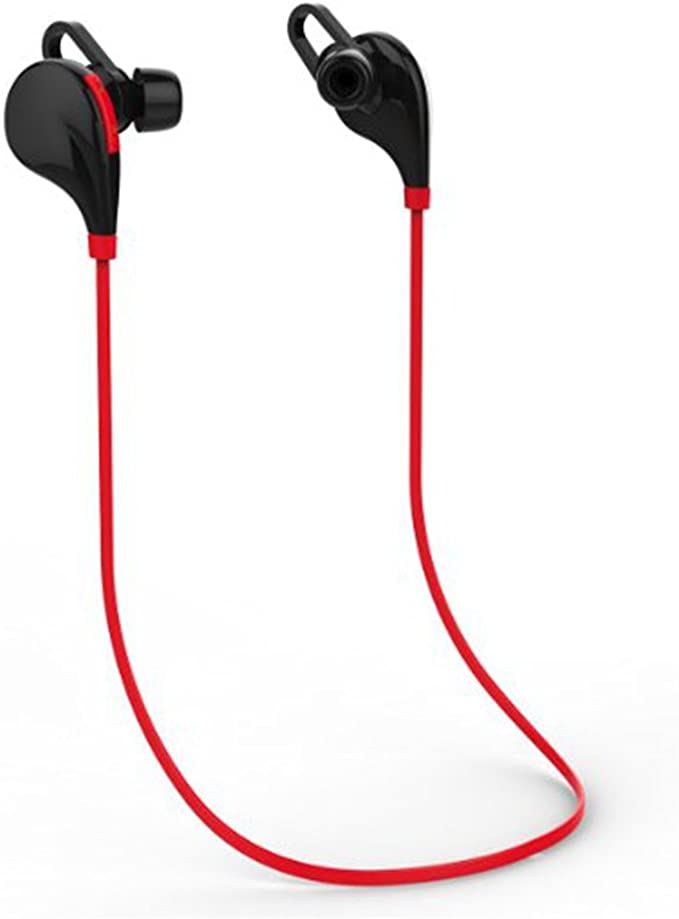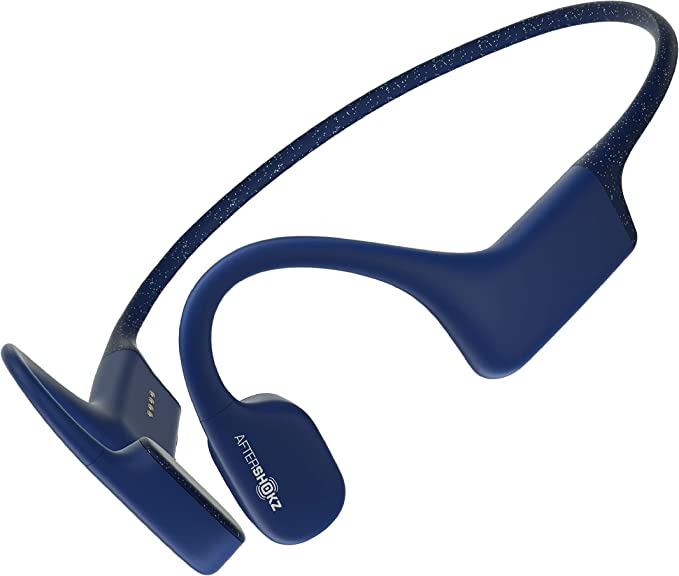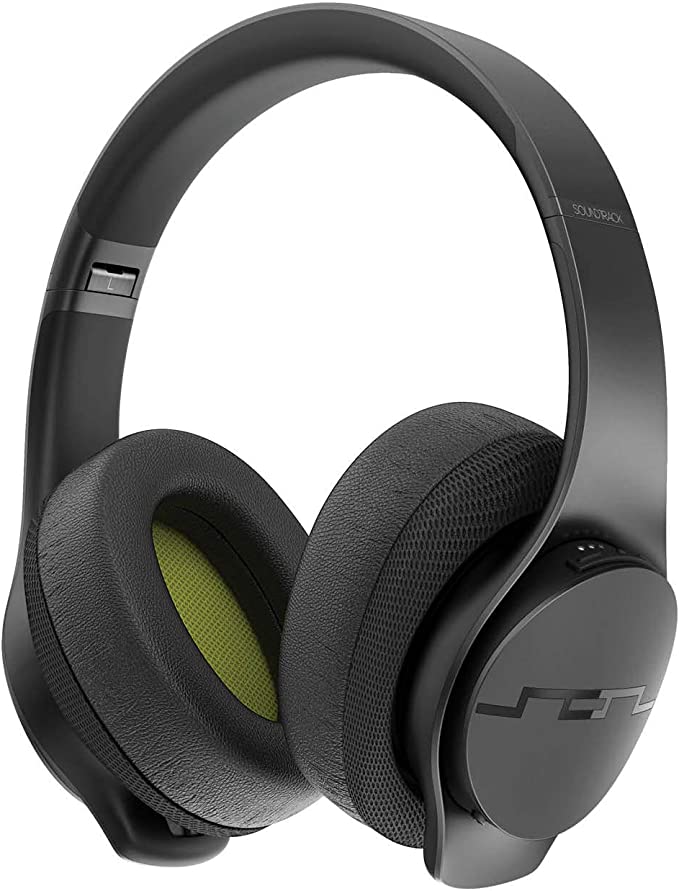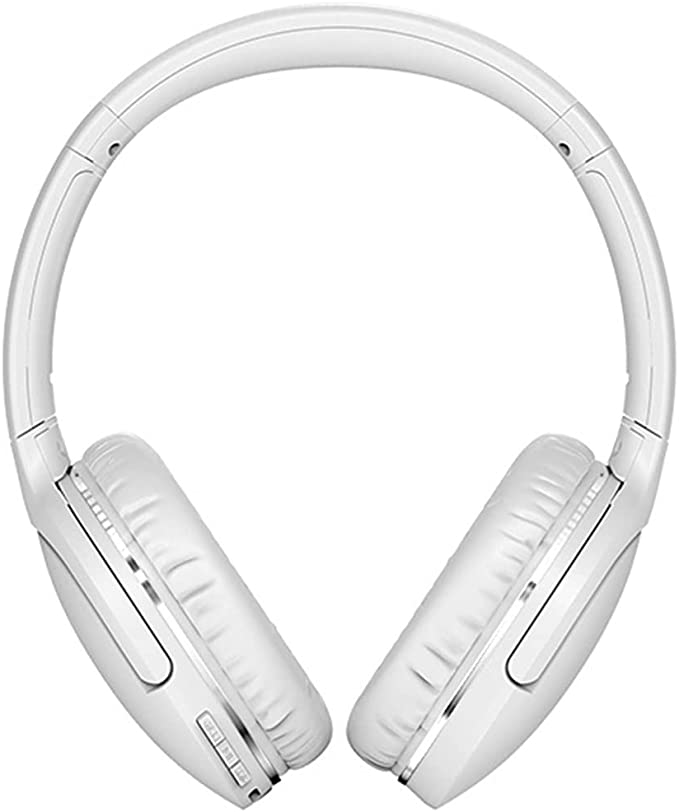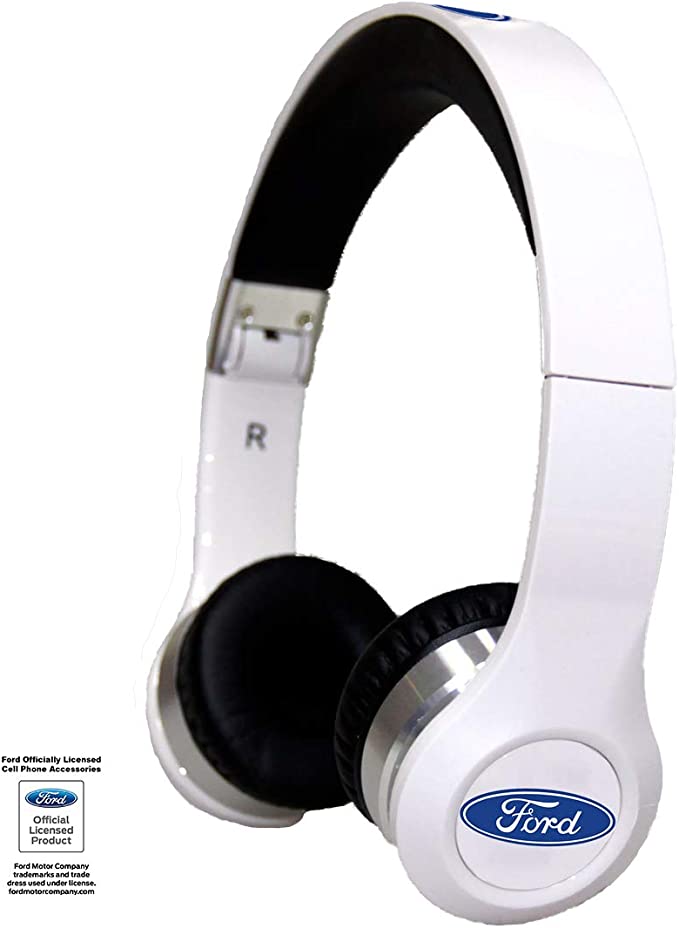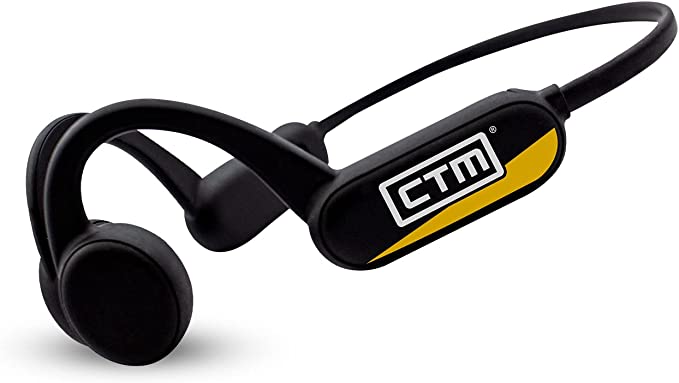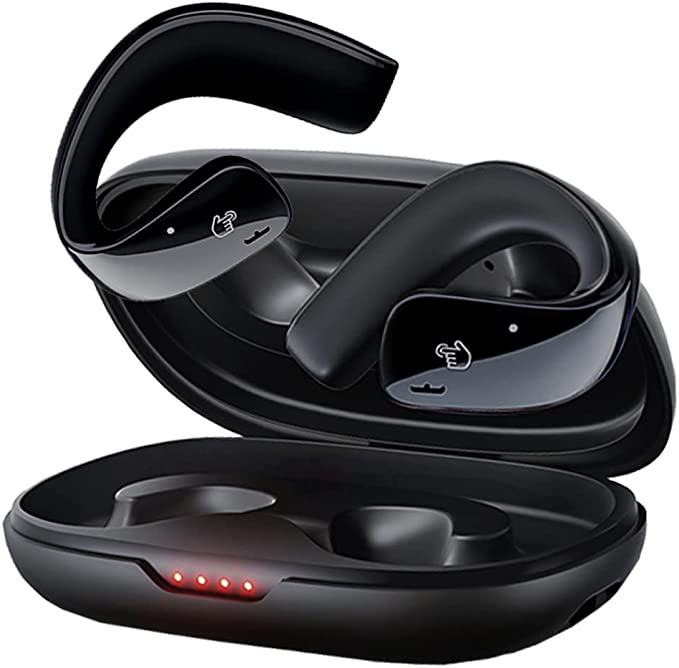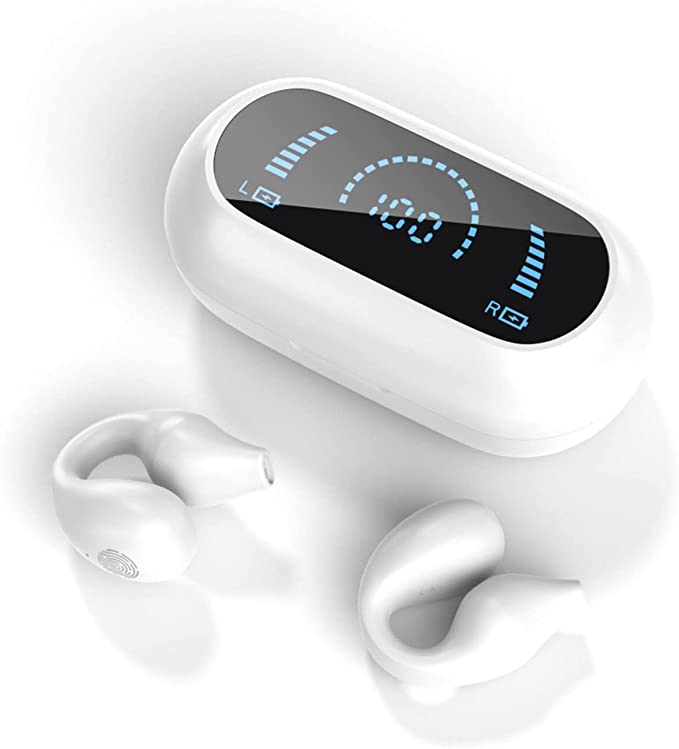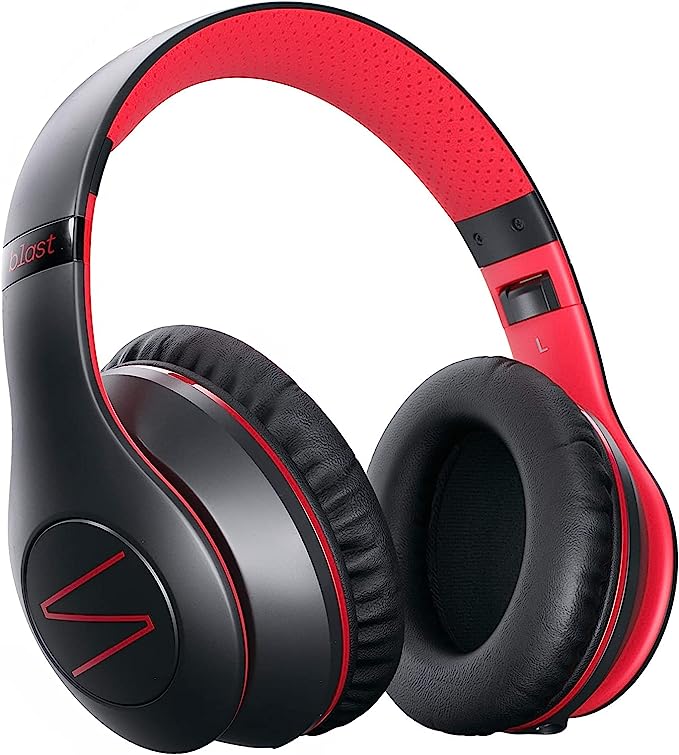mucro L36 Over Ear Wireless Headphones: The Science of Affordable Hi-Fi Sound and All-Day Comfort
Update on May 29, 2025, 7:52 a.m.
In our bustling modern lives, we’re constantly on a quest for our personal soundtrack, a private audio bubble to accompany us through commutes, focus-demanding work, or those precious moments of relaxation. The challenge, often, is finding that sweet spot: a listening experience that delivers on quality, envelopes us in comfort, and offers seamless convenience, all without emptying our wallets. It’s a tall order. So, when a pair of over-ear headphones like the mucro L36 Over-Ear Wireless Headphones steps into the ring with a host of promising features at an accessible price point, our curiosity is piqued. Can they truly deliver a symphony of sensible science and satisfying sound? Let’s tune in and explore the technology, design, and user experiences woven into their fabric.

The Heartbeat of Your Music – Decoding Those 40mm Drivers
At the very core of any headphone, the part responsible for transforming silent electrical signals into the vibrant tapestry of sound we perceive, lies the driver. The mucro L36 proudly highlights its “custom oversized 40mm dynamic drivers,” and that “40mm” isn’t just a random number.
Imagine the main speaker in a Hi-Fi system, the one that handles the full-bodied sound, especially those satisfying bass notes. Now, miniaturize that concept, and you’re getting close to what a headphone driver does. The “dynamic” part refers to its construction: a diaphragm (a thin, vibrating membrane), a voice coil attached to it, and a magnet. When your music’s electrical signal zips through the voice coil, it creates a tiny, rapidly changing magnetic field. This field interacts with the permanent magnet, causing the coil and the attached diaphragm to dance back and forth with incredible speed. These vibrations push and pull the air, creating sound waves that journey into your ears.
So, what’s the big deal about them being 40mm? Generally, a larger diaphragm surface area, like that in a 40mm driver, has the potential to move more air. Think of it like the difference between a small hand fan and a larger one; the larger one can create a more substantial breeze. In audio terms, this often translates to a better capacity for reproducing lower frequencies – the rumbles, the thumps, the warm embrace of a bass guitar or a kick drum. It can also contribute to a “fuller” sound, a sense of body and presence in the music. The mucro L36 promises a frequency response spanning 20Hz to 20kHz. This range is significant because it theoretically covers the entire spectrum of average human hearing. From the deepest, almost tactile vibrations around 20 Hertz (think a pipe organ’s lowest note) to the highest, crystalline shimmers around 20,000 Hertz (like the delicate overtones of a cymbal), these headphones aim to leave no part of your favorite tunes unheard. This is a cornerstone of what some might call “high-resolution sound” capability – the potential to render detail across the full audible range.
But drivers don’t work in a vacuum. The environment they’re in, and how they couple with your ears, is just as crucial. This brings us to the “soft memory foam ear cushion design.” Memory foam, or viscoelastic polyurethane foam if you want to get technical, is a marvel of material science. Its defining characteristic is its ability to slowly conform to an applied pressure and then gradually return to its original shape. When used in earpads, it molds gently around your ears, distributing pressure evenly and minimizing those dreaded hot spots that can make long listening sessions a pain.
This creates a comfortable, personalized seal, which acts as a double agent. Firstly, it significantly enhances comfort, as many users from the product page attest, with comments like “super comfortable to wear” and praise for the ergonomic design. Secondly, this seal crafts a closed acoustic environment. By minimizing gaps, it helps with “passive noise isolation” – physically blocking out a good portion of the ambient chatter, traffic rumbles, or office hum. This allows you to immerse yourself more deeply in the audio without cranking up the volume to dangerous levels. Furthermore, this closed-back design (where the outer shell of the earcup is solid) prevents sound from leaking out (sparing your neighbors on the bus) and, importantly, helps to reinforce bass frequencies, giving them more impact and presence. This contributes significantly to that “excellent immersive HIFI sound quality” the product aims for.

Cutting the Cords, Not the Quality – Bluetooth 5.1 and Connection Versatility
The allure of wireless headphones is undeniable: freedom from tangled cables, the ability to move untethered from your device. The mucro L36 employs Bluetooth 5.1 as its primary conduit for this wireless liberty.
If you’ve used Bluetooth devices over the years, you might have noticed things getting generally better – connections are more stable, pairing is quicker. Bluetooth 5.1 is part of that evolution. Compared to older iterations like Bluetooth 4.x, version 5.1 offers tangible benefits for an audio experience. One of the most lauded is improved connection stability and efficiency. This means you’re less likely to experience those frustrating dropouts or stutters in your music, even if there’s a bit of wireless interference around. The technology is also designed for better power efficiency, which plays a crucial role in how long your headphones can keep the music playing on a single charge. The mucro L36 claims a stable connection within a 10-meter (about 33 feet) radius. In real-world terms, this typically means you can leave your phone on your desk and wander around the room, or keep it in your bag while commuting, without losing your audio stream. “Fast pairing” is another boon, simplifying that initial handshake between the headphones and your phone, TV, tablet, or laptop.
However, wireless isn’t always the only answer. Recognizing this, mucro has included the option for a traditional wired connection via a 3.5mm AUX cable (though it’s worth noting the cable itself is not included). Why bother in a wireless world? Several reasons. Perhaps your headphones’ battery has run dry, or you want to connect to a device that doesn’t have Bluetooth, like an older MP3 player or an in-flight entertainment system. For some, a wired connection is still perceived as offering the purest, uncompressed audio signal, free from any potential latency that even the best Bluetooth might introduce. When wired, the audio signal transmission itself doesn’t typically drain the headphones’ battery, though active features, if any were present, still would.
Adding another layer of versatility is a feature not always found in this headphone category: a TF/SD card slot. This unassuming little slot transforms the mucro L36 into a standalone music player. If you load up a microSD card (often referred to as a TF card) with your favorite MP3s or other compatible audio files, you can enjoy your music library directly from the headphones, no phone or other paired device required. This is incredibly handy for a focused workout where you want to leave your phone behind, for kids who might not have a smartphone, or simply if you prefer a dedicated, distraction-free music device. It’s like having a tiny, wearable jukebox.

The Art of a Gentle Embrace – Ergonomics, Materials, and Portability
Beyond the sound and connectivity, how headphones feel during extended use is paramount. An hour into a listening session, even the most sonically brilliant headphones can become an instrument of torture if they’re not designed with human comfort in mind. The mucro L36 appears to take ergonomics seriously.
The product description highlights “super soft leather” for the ear pads and the top of the adjustable headband. While the exact nature of “leather” in budget-friendly headphones often means a high-quality synthetic (PU leather), the emphasis is on a soft, pliable touch against the skin. This, combined with the aforementioned memory foam, aims to minimize pressure points and allow for those long listening marathons, whether you’re binge-watching a series or deep in a work project. One user specifically praised the “best ergonomic design in a noise canceling headphone I have ever experienced,” also noting its light weight and comfort.
An adjustable headband is standard, but the mucro L36 mentions “sturdy plastic and stainless steel sliders (the steel is hidden in the headband).” The inclusion of stainless steel in the adjustment mechanism suggests a thought towards durability and a smooth, reliable sizing action to accommodate various head shapes and sizes. Achieving a snug yet gentle fit is key – too loose and the sound seal is compromised, too tight and discomfort quickly sets in. The overall “lightweight and compact” nature, with an item weight listed at 11.3 ounces (around 320 grams), also plays a significant role. Heavier headphones can lead to neck strain over time, so keeping the mass down is a definite plus for all-day wear.
For the listener on the move, portability is a major consideration. The mucro L36 features a foldable design. This typically involves hinges on the headband or swivels on the earcups that allow the headphones to collapse into a more compact form. This makes them far easier to tuck into a bag, a backpack, or the “storage box” mentioned, without taking up excessive space or risking damage. As one verified purchaser noted, “This wireless headset…is foldable and can fit into smaller purse as well. Very cute headset.” This practical engineering makes them a much more convenient companion for travel, commuting, or even just tidying away when not in use.

Powering Your Day (and Night) – Battery Life and Charging Rhythm
The freedom of wireless audio is directly proportional to battery endurance. The mucro L36 houses a rechargeable 300mAh (milliampere-hour) battery. In simple terms, mAh is a measure of electrical charge capacity – think of it as the size of the “fuel tank” for the headphones.
This 300mAh capacity is claimed to deliver up to 8 hours of non-stop music playback and an impressive 40 hours of standby time. Eight hours is a solid figure, potentially covering a full workday, a transatlantic flight (with some to spare), or several gym sessions. Standby time refers to how long the headphones can remain powered on and paired, ready to spring into action, without actively playing audio. Of course, actual playback time can vary based on factors like your listening volume (louder generally means more power consumption), the complexity of the audio, and even the distance from your Bluetooth source.
When the inevitable recharge is needed, a “2 hours fast charging” capability is advertised. This suggests the battery and its accompanying charging circuitry are optimized to replenish that 300mAh tank relatively quickly. Most modern rechargeable devices, including these headphones, utilize Lithium-ion (Li-ion) or Lithium-polymer (Li-poly) battery technology, known for its good energy density and rechargeability. While “fast charging” standards can vary, a two-hour turnaround for a full 8 hours of playback is a convenient ratio for most users, minimizing downtime. However, it’s worth noting a piece of user feedback: “I only had them for about four months before they stopped charging. I’m not sure if it’s the chord or what but they’re out.” This highlights that while the specs are promising, individual experiences with charging and longevity can differ, possibly due to the charging cable, the port, or the internal battery health over time.
More Than Just Music – Clear Calls and Hands-Free Ease
In our interconnected world, headphones often pull double duty as communication headsets. The mucro L36 incorporates a built-in microphone, aiming to “capture your voice fairly clearly.” This is essential for hands-free calls, whether you’re taking an important business call in your home office, chatting with family while prepping dinner, or quickly answering a call while on the go. The microphone converts the sound waves of your voice into an electrical signal that’s then transmitted via Bluetooth to your connected phone. The clarity of this capture is paramount for the person on the other end to understand you without straining.
Complementing the microphone is the “hands-free function.” This usually refers to integrated buttons on the earcups that allow you to manage calls and media playback without needing to fumble for your phone. The product mentions a “play button to answer/end/reject a call,” which is a standard and highly convenient feature. This tactile control enhances safety and ease of use, particularly when you’re active or your phone is tucked away.

The mucro L36 – An Affordable Symphony of Sensible Science?
So, what emerges when we look at the mucro L36 Over Ear Wireless Headphones through a scientific and user-focused lens? We see a product that thoughtfully attempts to blend a range of established audio, wireless, and material technologies into an accessible package. The 40mm dynamic drivers aim for a full-spectrum sound, aided by the passive isolation of memory foam earcups. Bluetooth 5.1 promises a stable and efficient wireless connection, supplemented by the versatility of wired and SD card playback. Ergonomic considerations like soft materials, an adjustable headband, and a foldable design cater to comfort and portability, while the 300mAh battery targets all-day listening.
The value proposition here appears to be a balancing act: delivering a comprehensive feature set, generally decent performance (as suggested by the 3.9-star average from 83 ratings and positive comments on sound and comfort for the price), all within an affordable bracket. One reviewer aptly put it, “Great bargain for this price. Great value for money.”
However, it’s crucial to approach with a complete picture, and that includes acknowledging the “elephant in the room” – the user-reported durability concerns. Feedback like “good, but broke,” “After 1 month of using them one side doesn’t work anymore,” and “Don’t last…After having for 2 months now the left side does not work” cannot be ignored. These experiences, while not universal, suggest potential trade-offs in materials or manufacturing quality control that might accompany the attractive price point. It raises questions about long-term reliability for some units. The manufacturer does offer a “30-days Hassle-free return policy & one-year warranty,” which provides a safety net and indicates some level of confidence in their product, but the pattern in a subset of reviews is a valid consideration for potential buyers.
Ultimately, choosing headphones is a deeply personal decision, weighing desired features, performance expectations, budget, and an acceptance of potential compromises. The mucro L36 presents a compelling array of features, many of which are backed by understandable and sensible science. It seems to hit many of the right notes for casual listeners, students, or anyone seeking a versatile, comfortable, and feature-rich wireless audio companion without a premium price tag. The question is whether its particular harmony of features, potential performance, and acknowledged user-reported durability aspects strike the right chord for your specific needs and expectations.
